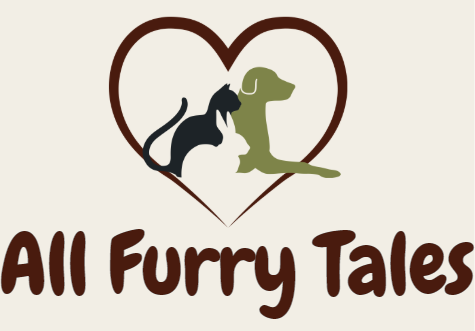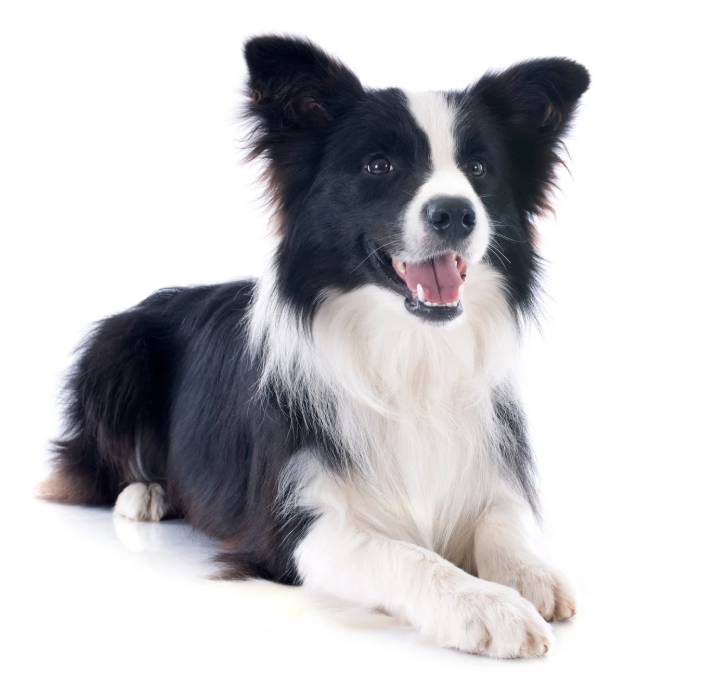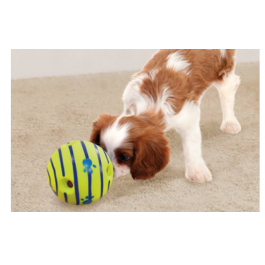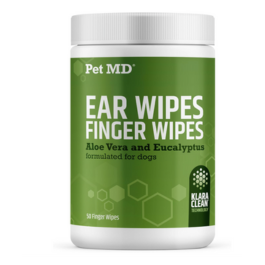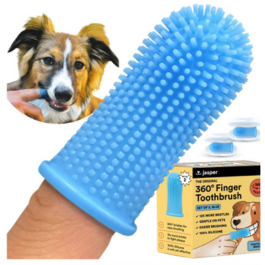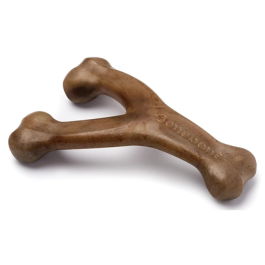Border Collie

About me: I'm the Einstein of the Dog World
Among all the world’s dog breeds, few captivate hearts and minds quite like the Border Collie. Bred along the rugged hillsides that divide Scotland and England, these dogs became legends of focus and intelligence. Their uncanny 2354ability to read a shepherd’s whistle or a mere glance has earned them a reputation as the smartest dogs alive.
Today, the Border Collie is adored not only for brilliance but also for unshakeable loyalty, lightning agility, and an emotional connection that feels almost human. They’re more than pets — they’re partners, teammates, and sometimes teachers. If you crave a companion who will keep up with your pace, challenge your thinking, and fill your days with laughter and purpose, you may have just found your perfect match.
Breed Overview and History
The Border Collie’s story begins on the windswept borders of Scotland and northern England. Shepherds needed dogs who could think, not just obey. Through centuries of selective breeding, they refined an animal with lightning-fast reactions, near-telepathic coordination, and unmatched endurance.
A single dog changed history — Old Hemp (born 1893). His calm, silent herding style was so effective that nearly every modern Border Collie descends from him. The name “Border Collie” itself came later, referring to the borderland region that produced this genius of a working dog.
By the early 20th century, these dogs dominated sheep-dog trials across Britain, earning international fame. When herding competitions spread to Australia, New Zealand, and America, the Border Collie followed — still outperforming every rival.
Even in the age of drones and tractors, farmers say, “Nothing moves sheep like a Collie’s eyes.”
Appearance and Physical Characteristics
Every feature of the Border Collie’s body reflects purpose. They’re medium-sized yet powerful, lean yet athletic. When a Collie moves, the body glides low to the ground in a smooth, panther-like gait — a posture that conserves energy while maintaining explosive speed.
Their head is proportionate with a long, tapering muzzle. Eyes are the soul of this breed — often brown, amber, or icy blue, burning with intelligence. Ears may stand tall or tip forward slightly, always alert to the faintest sound.
Border Collies wear a double coat that can be rough (long and feathery) or smooth (short and dense). Both varieties protect against rain, snow, and wind. Common colors include classic black-and-white, red-and-white, blue merle, tricolor, and sable. Their tails flow elegantly, carried low when relaxed and raised only when excited or in full motion.
While beauty wasn’t the goal of their breeders, it’s an inevitable by-product of perfect design — function so refined it becomes art.
Temperament
- Energetic, intelligent, alert, loyal, hardworking
Size
- Medium
Compatible With
- Active families
- Dogs
- Older children (best with those who respect boundaries)
Coat Type and Colours
- Double coat – smooth or rough
- Black & White
- Red & White
- Blue Merle
- Tri-colour
- Sable
Energy Level
- High to Very High
Origin
- Scotland / England border region
Grooming Needs
- Moderate (weekly brushing, seasonal shedding)
Lifespan
- 12 to 15 years
Border Collie Personality
Border Collies are alert, sensitive, and astonishingly self-aware. They don’t just react — they reason. Their minds are constantly assessing, planning, and anticipating. In many homes, owners swear their Collie knows what they’re about to do before they do it.
Intelligence with Heart
This breed ranks #1 in virtually every intelligence study. They learn new commands in fewer than five repetitions and remember them for years. Yet intellect alone doesn’t define them — they pair brains with emotional attunement. Speak softly and they’ll tilt their head in empathy; raise your voice and they’ll sense tension immediately.
With Family and Children
Around family, Border Collies are affectionate and loyal. They’re wonderful with older children who respect boundaries. With toddlers, early supervision matters — the Collie’s herding instinct may tempt them to “round up” small kids.
With Other Pets
They coexist well with other dogs and even cats when raised together. Introductions should be calm and structured, as their intense stare can intimidate timid animals.
Potential Challenges
The same intelligence that amazes owners can also test them. A bored Border Collie invents work — digging holes, chewing furniture, or herding the vacuum cleaner. To prevent mischief, give them structured activities and mental puzzles daily.
Behavioral Insights and Famous Examples
Scientists consider the Border Collie a gold standard for canine cognition. Psychologist Dr. Stanley Coren’s benchmark studies showed they understand human gestures faster than toddlers.
- Chaser, a female Border Collie, learned over 1,000 toy names and could combine verbs and nouns — a linguistic skill once thought exclusive to humans.
- Rico, a German research dog, demonstrated “fast-mapping,” linking new words to objects after hearing them once.
- Even Queen Victoria kept Border Collies at Balmoral, praising their dignity and devotion.
Mental Enrichment Matters
Because they crave problem-solving, simple walks aren’t enough. Try:
- Scent trails in your yard.
- Puzzle feeders for meals.
- Teaching the names of toys.
- Agility or fly-ball competitions.
Each mental challenge reduces anxiety and prevents destructive habits
Is the Border Collie Right for You?
Ideal for:
- Active families with older children
- Owners with large backyards, farms, or rural properties
- People who enjoy outdoor activities like running, hiking, or agility sports
- Experienced dog owners looking for a highly trainable working breed
Not Ideal for:
- Apartment dwellers or homes without regular access to outdoor space
- People away from home most of the day
- Owners seeking a low-energy, easygoing companion

Training, Exercise and Mental Stimulation
Border Collies are born students. They learn faster than many owners can teach, so variety is essential
Training Approach
Use positive reinforcement — praise, treats, and play. Avoid harsh tones; they shut down emotionally if corrected unfairly. Keep sessions short (10–15 minutes) but frequent. Teach new tasks often — repetition without challenge leads to boredom.
Exercise Needs
Expect to devote at least 90 to 120 minutes of exercise per day. Split time between aerobic activities and problem-solving games. For example:
- Morning run or brisk walk (45 minutes)
- Evening fetch or frisbee session (30 minutes)
- Short obedience drills or trick training before bed (15 minutes)
On rainy days, turn training indoors — practice “find it,” scent games, or obstacle courses made from chairs and cushions. A tired Border Collie is a happy, well-behaved one.
Feeding and Nutrition

Diet fuels their athletic lifestyle. High-quality kibble or fresh food formulated for active medium breeds works best.
Adults typically need 1,000 to 1,400 calories daily, depending on activity level. Choose recipes rich in meat proteins like chicken, beef, or fish, with healthy fats from salmon oil or flaxseed. Avoid artificial fillers and overly fatty snacks.
Puppies require three meals daily to sustain growth, while adults do well with two balanced meals. For seniors, reduce calories slightly and add joint supplements such as glucosamine and omega-3 fatty acids.
Always keep fresh water available and maintain a consistent feeding schedule to prevent digestive upset.
Grooming and Coat Care
Border Collies wear a weatherproof double coat designed for the hills of Britain, not modern apartments — but with the right care, it’s easy to manage.
Weekly brushing removes loose fur and prevents tangles. During shedding season (spring and autumn), daily brushing helps control hair fall and keeps their coat shiny. Use a slicker brush for rough coats and a bristle brush for smooth coats.
Bathe your Collie every six to eight weeks, or sooner if they love mud puddles. Use a mild, pH-balanced dog shampoo — their skin is sensitive and prone to dryness. Trim nails monthly, check ears weekly for wax or irritation, and brush teeth three times per week with dog-safe toothpaste.
Professional grooming every two months keeps their coat and undercoat balanced, reducing the chance of matting. It’s also the perfect time to check for skin lumps or tick bites, especially if they play outdoors often.
Their double coat sheds seasonally and needs steady care.
- Brush 3–4 times per week to manage shedding
- Professional grooming every 6–8 weeks
- Regular teeth cleaning for oral health
- Check and clean ears to prevent irritation
- Grooming routine keeps Border Collies healthy, shiny, and comfortable

Health & Common Issues
Border Collies are healthy and sturdy dogs, but selective breeding and intense work drive have created some genetic vulnerabilities. Responsible breeders screen for these before mating.
Common Health Concerns
- Hip Dysplasia: A hereditary joint issue that causes discomfort or arthritis. Keep your Collie lean and avoid letting puppies jump from heights.
- Collie Eye Anomaly (CEA): A genetic retinal disease affecting vision; early testing is key.
- Epilepsy: Some lines inherit a seizure disorder; medication can manage it.
- Progressive Retinal Atrophy (PRA): A gradual vision loss common in older dogs.
- MDR1 Sensitivity: A genetic mutation causing adverse reactions to certain drugs — ask your vet for testing
Preventive Care and Lifespan
Routine vet visits, annual bloodwork, vaccinations, and dental care keep Border Collies thriving well past 12 years. Many reach 16 or even 17 when well cared for. A balanced diet, daily exercise, and mental stimulation are as vital to longevity as genetics.
To boost their healthspan, consider adding omega-3 fatty acids, joint chews, and cognitive supplements approved by your vet.
Living With a Border Collie
Owning a Border Collie is like living with a teammate — one who never calls in sick. They thrive when part of the family’s daily rhythm.
They’ll follow you from room to room, study your habits, and remind you when it’s walk time. When properly stimulated, they’re calm, loving, and hilariously expressive — tilting their head in confusion, nudging toys toward your feet, or giving the classic Collie “stare” that seems to say, “You forgot my game.”
If you work from home, they’ll happily sit by your desk, content just to be near you. But if ignored too long, they may start “redecorating” your shoes.
Border Collies crave connection — they’re not background dogs. Give them a sense of purpose, whether that’s agility classes, running errands with you, or simply fetching the mail.
Owner Stories and Real-World Experiences
My Border Collie, Koda, knows the sound of my car two blocks away. He’s at the gate before I turn the corner.– Sam, Melbourne
We joined an agility club to channel Daisy’s energy. Now she sleeps peacefully — after outrunning every other dog on the field.– Clara, Perth
I didn’t realize how much she changed my life until I started waking up early just so we could run together before work.– Jacob, Sydney
These stories echo the breed’s core: the Border Collie doesn’t just share your life — they shape it. They create routines, encourage outdoor time, and offer companionship that feels purposeful.
Border Collie vs Similar Breeds
When deciding between active, intelligent breeds, here’s how the Border Collie stands apart:
- Australian Shepherd: Slightly stockier, calmer temperament, and more adaptable to urban life.
- Shetland Sheepdog: Smaller with similar intelligence but less intensity.
- German Shepherd: Protective guardian instincts rather than herding focus.
- Cavoodle: Ideal for families seeking affectionate companionship without high exercise demands
If energy, intelligence, and purpose are what you value most, the Border Collie remains unmatched.
Frequently Asked Questions
Quick Reference Summary
If you’re skimming for a quick takeaway, here’s what to remember:
Breed Origin
Ideal Owners:
Grooming Routine
Life Expectancy
Temperament
Exercise Needs
Common Health Issues
Final Woof
The Border Collie isn’t for everyone — but for those who can meet their needs, they’re everything. They’ll run with you in the rain, learn your language, and watch you with eyes that seem to understand more than words ever could.
They’re the Einstein of the dog world — but also the poet, the athlete, and the best friend who never lets you forget the joy of movement and connection.
If you’re ready for a partnership built on trust, energy, and brilliance, the Border Collie will make your world feel bigger, brighter, and far more alive.
